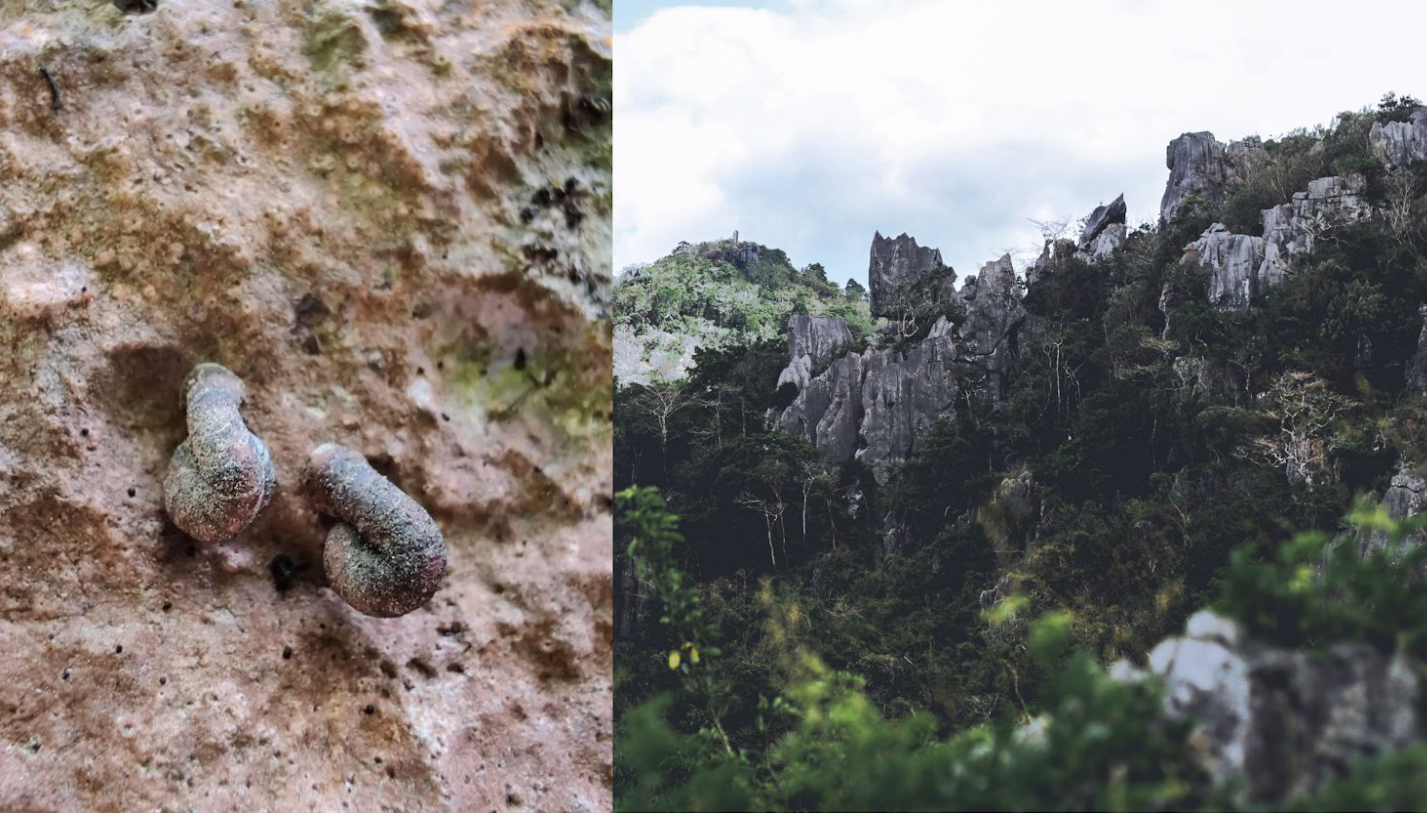Filipino scientists discover new microsnail subspecies at Masungi Georeserve

A new subspecies of microsnail has been discovered at Masungi Georeserve in Rizal.
After a three-year study, Filipino scientists from University of the Philippines Los Baños discovered Hypselostoma latispira masungiensis, a “karst-dependent land snail which can be found attached to limestone boulders feeding on lichens and other vegetation.”
According to a release by Masungi Georeserve, the conservation area is the only known habitat of the newly discovered miscrosnail, which has the size of less than 5 mm similar to that of a worker ant.
The study, led by Harold B. Lipae, Angelique L. Estabillo, Ian Kendrich C. Fontanilla, and Emmanuel Ryan C. de Chavez, began in 2017 when the team discovered the snail upon exploring the nature reserve.
The snail, said the scientists, bore similarities with the Hypselostoma latispira which was recorded only in Baguio City, Benguet. Curious how a site-specific snail ended up 200 km south of the city, the team conducted more research and morphological and DNA analyses on the newly discovered subspecies.
The study, which is now published in the Philippine Journal of Systematic Biology, found that the snails from Baguio were smaller in shell size and had “narrower body whorl and apertural width,” while the snails from Masungi were bigger and had “larger body whorl and apertural width.”
“The snails from Masungi also have five apertural teeth inside its shell, while the snails from Baguio only have four teeth,” said the release.
However, despite the distance between the two, the two kinds of snails were found to have 99.98% genetic similarity, suggesting that the snails in Masungi were “from the same species but a new subspecies of microsnail.”
The slight divergence in genes could be attributed to the different environmental conditions between the two sites, said the statement by Masungi Georeserve.
According to Dr. Ryan de Chavez of the animal biology division, UPLB Institute of Biological Sciences, karst ecosystems, such as Masungi, can be considered habitat islands.
“Snails through time became intimately dependent on these habitats, are then ‘trapped’ in these areas,” he shared.
“The discovery of the Masungi-endemic snail only stresses the urgent need to protect Masungi against destructive interests, such as quarrying and land trafficking, which significantly alter the landscape,” said Ann Dumaliang, managing trustee at Masungi Georeserve Foundation.
“With low mobility, snails are among the most vulnerable and helpless animals. If the rocks and soils are extracted, these species will be annihilated without a trace. We all need to be working together to ensure the perpetual conservation of known and unknown species living here. It is possible by genuinely protecting and restoring the land, their habitat,” she added.
The team, with the support of Masungi Georeserve Foundation, and the Department of Environment and Natural Resources, continues to study the high diversity of snail species at the reserve, which “may be one of the highest ever recorded in the country.” – Kaela Malig/RC, GMA News





